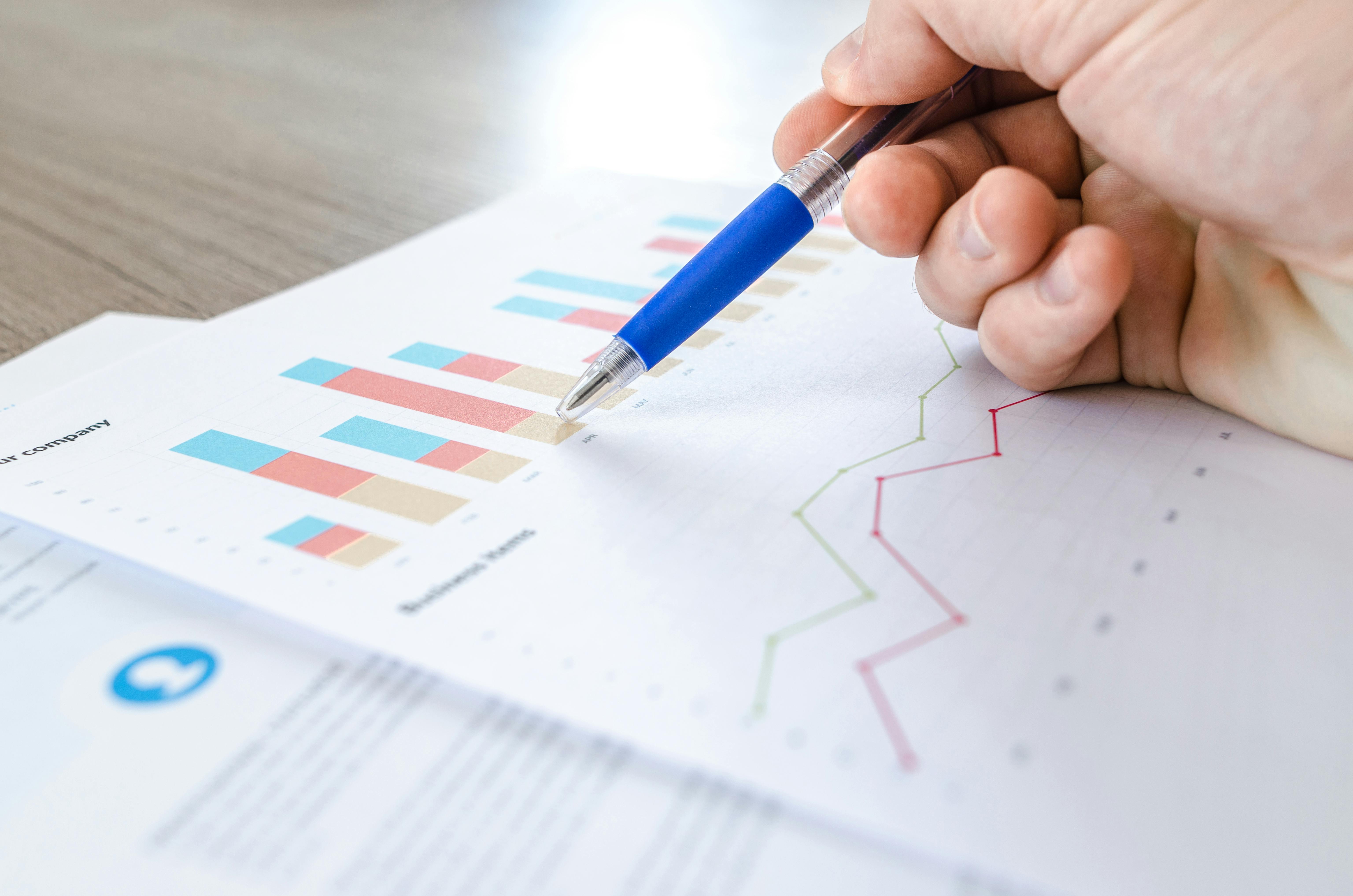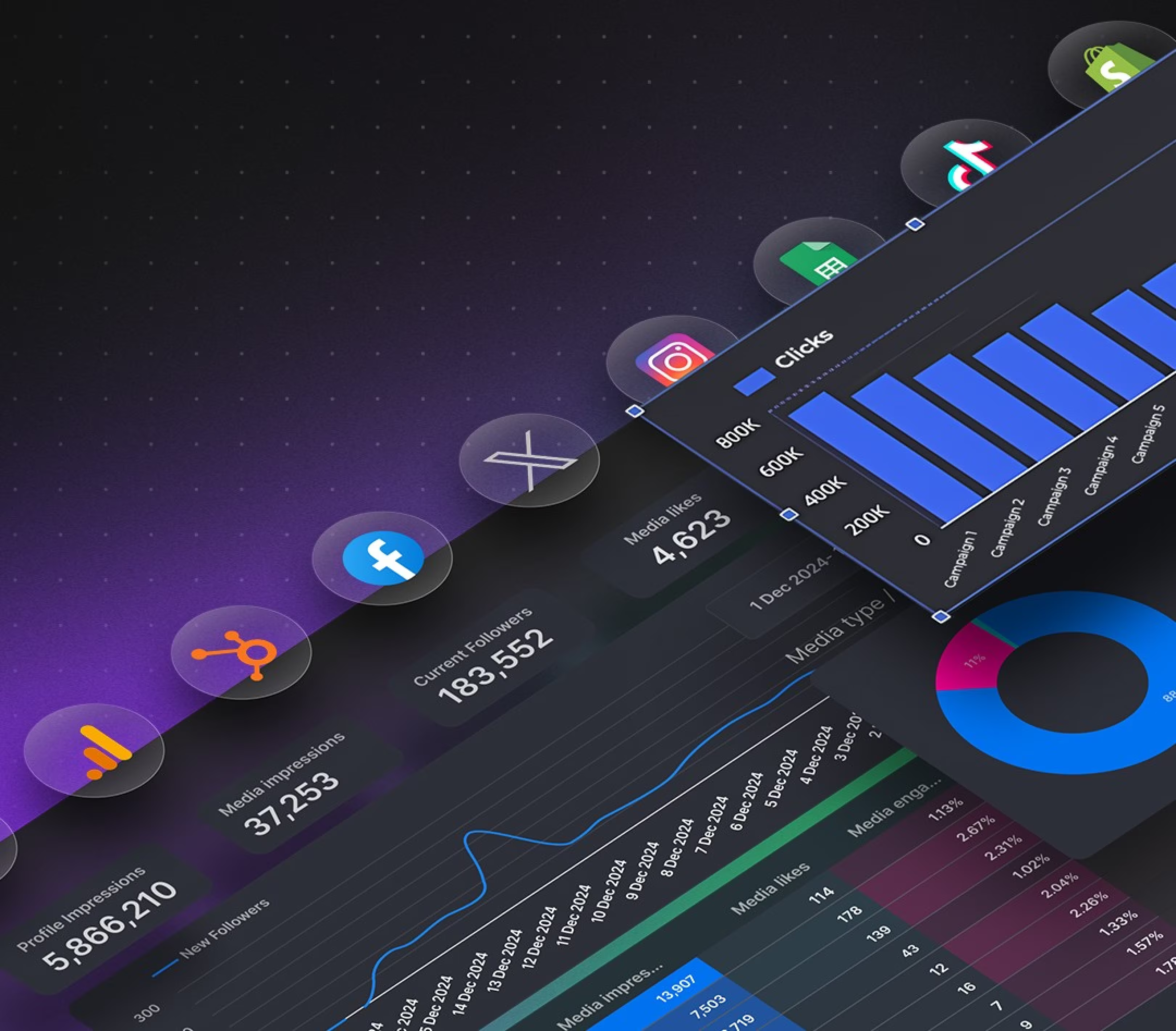Predictive analytics in marketing uses historical data, machine learning, and statistical models to forecast customer behavior and campaign performance before you spend a dollar. By 2025, 75% of top-performing marketing teams will use predictive analytics, and companies optimizing across all channels see a 15-20% improvement in marketing ROI. This guide breaks down exactly how to implement predictive analytics, from choosing the right models to avoiding common pitfalls, whether you're running campaigns solo or managing a team.
Impact vs Effort: Predictive Analytics Use Cases
Why Every Marketer Needs to Understand Predictive Analytics
Your last campaign underperformed. Despite all the data in your analytics dashboard, you couldn't see it coming until the budget was already spent. Meanwhile, your competitor somehow knew exactly which channels would deliver, which customers were about to churn, and which products to promote, before launching anything.
The difference? They stopped guessing and started predicting.
Here's the reality: marketing analytics only influences 53% of decisions (Gartner), meaning nearly half of marketing strategies still rely on gut feeling. That's not just inefficient, it's expensive. When customer acquisition costs are climbing and budgets are tightening, marketers who can forecast outcomes beat those who react to them.
Predictive analytics transforms your historical campaign data, customer behavior, and market signals into reliable forecasts about what happens next. It's the difference between driving with GPS versus an outdated map.
What Is Predictive Analytics in Marketing?
Predictive analytics uses statistical models, machine learning algorithms, and historical data to forecast future customer behavior and marketing outcomes. Unlike descriptive analytics (what happened) or diagnostic analytics (why it happened), predictive analytics answers: What's likely to happen next?
Think of it this way: You have months or years of data sitting in Google Analytics, your CRM, ad platforms, and email tools. Predictive analytics trains models on that data to identify patterns, then uses those patterns to forecast which customers will buy, which campaigns will perform, or when engagement will drop.
The predictive analytics market will hit $35.5 billion by 2027, growing at 21.9% annually. This isn't some futuristic concept. Brands use it daily to fine-tune everything from ad budgets to product recommendations.
The Building Blocks of Predictive Marketing
Predictive analytics relies on three components:
- Historical Data: Past campaign performance, customer purchase history, website behavior, email engagement, CRM records, and transaction data. The more quality data you have, the better your predictions.
- Machine Learning Models: Algorithms that identify patterns in your data. These include regression models (forecasting sales), classification models (predicting churn), and clustering algorithms (segmenting customers by behavior).
- Real-Time Inputs: Live signals from your marketing stack: CRM activity, ad platform metrics, website sessions, and email opens, ... that update predictions as new data flows in.
When these three work together, you get forecasts that actually move the needle.
Real-World Predictive Analytics Examples That Prove It Works
Let's look at how companies already use predictive analytics to win:
Netflix: Over 80% of Viewing Driven by Predictions
Netflix's recommendation engine analyzes viewing history, time of day, device type, and even when you pause or rewind. Over 80% of what people watch comes from these predictive recommendations. That's not a nice-to-have feature, it's the core of their retention strategy.
Amazon: 30% of Sales From Predictive Recommendations
Amazon's "customers who bought this also bought" feature is powered by predictive models trained on millions of transactions. This recommendation engine drives up to 30% of their total sales. They predict what you'll want before you search for it.
McDonald's Hong Kong: 550% Increase in App Orders
McDonald's Hong Kong used Google Analytics 4's predictive audiences feature to target users "likely to purchase soon" and "likely to churn." By optimizing bids in real-time for these predicted segments, they saw a 550% increase in app orders and a 63% reduction in cost per acquisition. Same budget, massively different results.
Walmart: Weather-Based Campaign Adjustments
Walmart uses predictive analytics to forecast demand based on upcoming weather events. If a heatwave's coming, their models predict spikes in specific product categories, bottled water, air conditioners, grilling supplies, and they adjust inventory and ad spend accordingly. They don't guess what customers will want; they prepare.
Verizon: Reducing Churn Before It Happens
Verizon built churn prediction models that flag subscribers showing early signs of disengagement, fewer logins, no purchases in 30 days, support ticket patterns. Instead of trying to win back customers after they cancel (expensive), they intervene early with targeted retention offers.
Retail Churn Prediction: 330% Accuracy Improvement
A retail company partnered with Lityx to identify customers who wouldn't return after a single visit. Their predictive models analyzed demographics, transaction history, and marketing activity to estimate re-purchase probability. Result: 330% increase in spotting at-risk customers and 265% boost in predicting repeat purchases.
Lead Conversion: 38% Improvement
A digitally-native company used machine learning to categorize leads as hot, warm, or cold based on behavior signals. Marketing immediately focused on high-scoring leads with tailored nurture campaigns. Lead conversion increased by 38%, same team, same budget, smarter targeting.
Types of Predictive Analytics Models for Marketers
Different marketing challenges need different predictive models. Here are the five you should know:

1. Classification Models
What they predict: Binary outcomes, will this customer churn? Will this lead convert?
How marketers use them: Lead scoring, churn risk flagging, email engagement prediction
Example: A SaaS company flags accounts with multiple unresolved support tickets as high churn risk, then triggers proactive retention campaigns.
2. Regression Models
What they predict: Numerical outcomes, how much revenue will this campaign generate? What's the expected ROI?
How marketers use them: Budget forecasting, sales predictions, seasonal planning
Example: An e-commerce brand predicts holiday sales based on past years' performance, current traffic trends, and inventory levels.
3. Clustering Models
What they predict: Customer segments based on behavior patterns
How marketers use them: Audience segmentation beyond basic demographics, personalized campaign targeting
Example: A fitness app clusters users into "morning exercisers," "weekend warriors," and "inconsistent users," then sends targeted messages to each group.
4. Time Series Models
What they predict: Trends over time: seasonal spikes, cyclical patterns, growth trajectories
How marketers use them: Campaign timing, content calendars, budget allocation across quarters
Example: A retailer predicts Black Friday traffic spikes and scales ad spend two weeks before, not during the event.
5. Propensity Models
What they predict: Likelihood of specific actions: purchase probability, upsell readiness, content engagement
How marketers use them: Product recommendations, cross-sell campaigns, personalized offers
Example: An online bookstore recommends titles based on purchase history and browsing behavior, similar to Amazon's engine.
How to Get Started with Predictive Analytics (Even with Limited Resources)
You don't need a team of data scientists or enterprise budgets to start using predictive analytics. Here's the practical path:
Step 1: Define What You Want to Predict
Don't try to predict everything. Pick one specific, measurable outcome:
- Which leads will convert in the next 30 days?
- Which customers are likely to churn this quarter?
- Which marketing channel will deliver the highest ROI next month?
- When should we launch our next campaign for maximum engagement?
Clear goals shape everything else, the data you collect, the model you choose, and how you measure success.
Step 2: Consolidate Your Data
Predictive analytics only works if your data is clean, connected, and accessible. Most marketers face data scattered across platforms:
- Google Ads performance metrics
- Facebook Ads campaign data
- CRM customer records (HubSpot, Salesforce)
- Email engagement (Mailchimp, Klaviyo)
- Website behavior (Google Analytics, Mixpanel)
- E-commerce transactions (Shopify, WooCommerce)
Siloed data kills predictions. If your Google Ads data lives separately from your CRM, you can't predict which campaigns drive the highest customer lifetime value. Learn more about data integration best practices.
You can consolidate data manually with exports, but that's slow and error-prone. Tools that automate data integration, pulling metrics from multiple platforms into a single destination like Google Sheets, Looker Studio, BigQuery, or Power BI,
make this step dramatically easier.
For example, if you're analyzing cross-channel performance to predict future ROI, you could use Dataslayer to automatically pull Google Ads, Facebook Ads, LinkedIn Ads, and GA4 data into one dashboard daily. This creates the unified dataset predictive models need without manual exports. Marketing teams report saving up to 200 hours monthly by automating data consolidation.

Step 3: Choose Your Starting Model
Don't overcomplicate this. Start with one model type that matches your goal:
If predicting lead conversion: Use a classification model (logistic regression or decision tree)
If forecasting sales or budget needs: Use a regression model (linear regression or time series)
If segmenting customers: Use a clustering model (k-means clustering)
Many platforms now offer no-code or low-code predictive features:
- Google Analytics 4: Built-in predictive audiences (likely to purchase, likely to churn)
- HubSpot: Predictive lead scoring
- Salesforce Einstein: AI-powered predictions for CRM data
- Looker: Predictive modeling within dashboards
- Excel/Google Sheets: Simple regression models for forecasting
You don't need custom code to get started.
Step 4: Test Your Model with Historical Data
Before trusting predictions, validate your model using past data. Split your historical data:
- Training set (70-80%): The model learns patterns from this data
- Testing set (20-30%): You check if predictions match actual outcomes
If your model predicts last quarter's conversions with 80%+ accuracy, you can trust it for future forecasts. If accuracy is low, you need more data, better data quality, or a different model type.
Step 5: Apply Predictions to Real Campaigns
Once validated, use predictions to guide decisions:
- High-scoring leads? Route them directly to sales with priority follow-up
- Churn risk flagged? Trigger automated retention emails or discount offers
- Channel ROI forecast looking strong? Shift budget toward that channel mid-campaign
- Product recommendation ready? Display it on the homepage or in abandoned cart emails
The key is connecting predictions to actions, not just insights.
Step 6: Monitor and Refine
Predictive models aren't set-and-forget. Customer behavior shifts, market conditions change, and new data changes patterns. Schedule monthly or quarterly reviews:
- Is accuracy holding steady or declining?
- Are predictions still influencing better outcomes?
- Do you need to retrain the model with fresh data?
Most machine learning platforms auto-update models as new data flows in, but you still need human oversight to catch issues early.
Common Predictive Analytics Challenges (And How to Solve Them)
Challenge 1: Data Quality Issues
The problem: Missing data, duplicate records, inconsistent formats across platforms
The solution: Implement data validation rules and use integration tools that normalize data automatically. If Facebook Ads shows dates as DD-MM-YYYY but Google Ads uses YYYY-MM-DD, your predictions will fail.
Challenge 2: Not Enough Historical Data
The problem: Predictive models need volume to identify patterns. If you only have two months of campaign data, predictions will be unreliable.
The solution: Start with simpler models (like lead scoring based on behavior) that need less data, then graduate to complex forecasting as you build history. Most experts recommend at least 6-12 months of clean data for reliable predictions.
Challenge 3: Over-Reliance on AI Without Human Judgment
The problem: Trusting predictions blindly leads to generic campaigns or missed opportunities. Models don't understand context, they see patterns in numbers.
The solution: Use predictions to inform decisions, not make them. If a model predicts low engagement for a campaign but you know there's a major product launch or seasonal event, adjust accordingly. Combine data with domain expertise.
Challenge 4: Privacy and Compliance Concerns
The problem: Predictive analytics relies on customer data, raising GDPR, CCPA, and privacy questions.
The solution: Only use data customers have consented to share. Focus on first-party data (your own customer records) rather than purchased third-party lists. Be transparent about how you use data for personalization.
Challenge 5: Interpreting Results Incorrectly
The problem: Mistaking correlation for causation or treating probabilities as guarantees. A model says "85% chance this customer will buy" doesn't mean they definitely will.
The solution: Frame predictions as likelihood, not certainty. Use confidence intervals and test multiple scenarios. Always validate predictions against real outcomes.
Predictive Analytics for Different Marketing Budgets
Starting Out (Under $5K/month marketing spend)
Focus on: Built-in predictive features in tools you already use
- Google Analytics 4 predictive audiences (free)
- Email platform churn predictions (included in most ESPs)
- Simple regression models in Google Sheets or Excel
Best use cases: Lead scoring, churn flagging, email send-time optimization
Growing Teams ($5K-$50K/month spend)
Focus on: Dedicated analytics platforms with automation
- Looker Studio or Power BI for predictive dashboards
- HubSpot or Salesforce Einstein for CRM predictions
- Automated data integration to unify metrics
Best use cases: Cross-channel budget optimization, customer lifetime value prediction, campaign forecasting
Enterprise (Over $50K/month spend)
Focus on: Custom machine learning models and advanced platforms
- Adobe Analytics with AI-powered insights
- Custom models built by data science teams
- Real-time prediction engines integrated with ad bidding
Best use cases: Real-time bidding optimization, multi-touch attribution modeling, complex churn prevention systems
The Future: Predictive + Prescriptive Analytics
Once you've mastered predictive analytics, the next level is prescriptive analytics, models that don't just forecast what will happen, but recommend what actions to take.
Example: Instead of "This customer has an 85% churn risk," prescriptive analytics says "Send this customer a 15% discount via email on Tuesday at 2pm, based on historical data showing that offer timing has the highest retention rate for similar profiles."
This is where marketing becomes truly automated and self-improving. AI doesn't just predict, it acts.
Frequently Asked Questions
What's the difference between predictive analytics and regular marketing analytics?
Regular analytics (descriptive and diagnostic) tells you what happened and why, like "Our Facebook Ads had a 2.3% CTR last month because we targeted the wrong audience." Predictive analytics tells you what's likely to happen next, like "If we shift budget to Instagram Reels targeting 25-34 year-olds, we'll likely see a 30% lift in conversions next month." It's the difference between looking backward and looking forward.
Do I need to know coding or data science to use predictive analytics?
No. Many modern platforms offer no-code predictive features, Google Analytics 4's predictive audiences, HubSpot's lead scoring, and dashboard tools like Looker Studio or Power BI let you build forecasts without writing code. That said, understanding basic statistics (like what regression means or how to interpret confidence intervals) helps you use predictions more effectively.
How much historical data do I need to start?
At minimum, 6-12 months of clean data for reliable forecasts. If you're doing something simpler like lead scoring based on engagement actions (email opens, site visits, downloads), you can start with 3 months. Time series forecasting (like predicting next quarter's sales) needs at least a year to capture seasonal patterns.
What's the biggest mistake marketers make with predictive analytics?
Treating predictions as guarantees instead of probabilities. A model saying "80% chance this lead will convert" means 8 out of 10 similar leads converted historically, but this specific lead still might not. The second biggest mistake is bad data quality. If your CRM has duplicate records or your ad platform tracking is broken, predictions will be wrong no matter how good the model is.
Can small marketing teams or solopreneurs benefit from predictive analytics?
Absolutely. Start with free built-in features like GA4's predictive audiences or your email platform's send-time optimization. Use simple regression models in Google Sheets to forecast sales or budget needs. Even basic lead scoring (giving prospects points for actions like downloading content or attending webinars) is a form of predictive analytics. You don't need enterprise budgets, just clean data and clear goals.
How do I measure ROI from predictive analytics?
Compare outcomes before and after implementing predictions. If you started using predictive lead scoring, track: Did your conversion rate improve? Did sales close deals faster? If you used budget forecasting, track: Did you overspend less frequently? Did channel ROI improve? The key metric is decision quality, are you making fewer expensive mistakes and more winning bets?
Which marketing channels work best with predictive analytics?
All of them, but the biggest wins come from channels with lots of data: paid search (Google Ads), social ads (Facebook, Instagram, LinkedIn), email marketing, and website personalization. E-commerce brands see strong results predicting product recommendations and abandoned cart behavior. B2B teams win big with lead scoring and account-based marketing predictions.
Take the Predictive Leap
Predictive analytics isn't reserved for enterprise teams with data science departments. The tools are accessible, the ROI is measurable, and the competitive advantage is real. Companies that grow faster drive 40% more revenue from personalization than their slower-growing counterparts, and predictive analytics powers that personalization.
Start with one use case: lead scoring, churn prevention, or budget forecasting. Consolidate your data so it's actually usable. Test a simple model. Then refine and expand as you see results.
The marketers still relying on gut feeling and post-campaign reports are getting left behind. The ones predicting outcomes and adjusting mid-flight? They're winning.
Want to automate the data consolidation step? Try Dataslayer free for 15 days to connect Google Ads, Facebook Ads, LinkedIn, GA4, and 50+ other platforms to Google Sheets, Looker Studio, BigQuery, or Power BI, giving you the clean, unified dataset predictive analytics needs.







